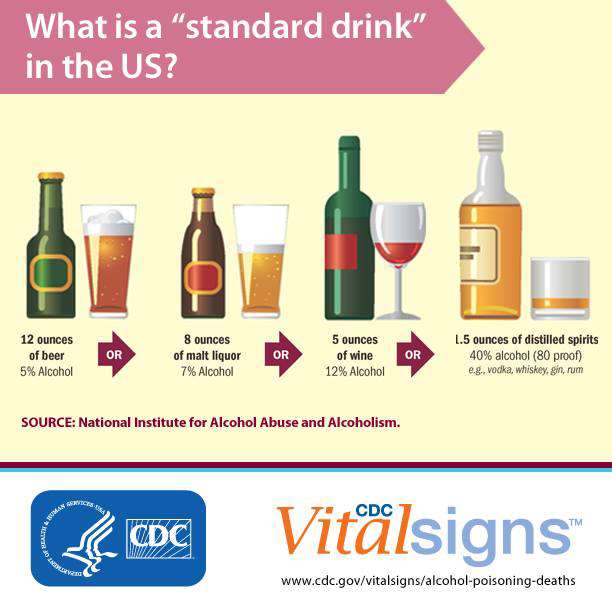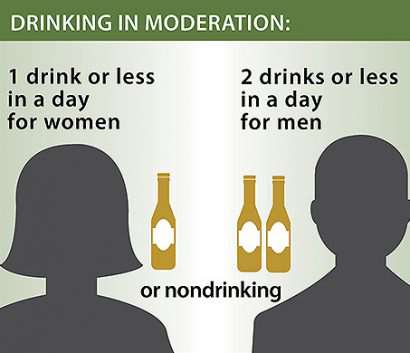Understanding Standard Serving Sizes & Limiting Alcohol
Why It Matters
Many people are not aware of how much alcohol is a standard serving size. And in recent years, the amount of alcohol in what appears to be a single serving size can be misleading.
'Standard Drink' Definition
In the United States, for public health purposes, a "standard drink" contains 0.6 fluid ounces or 14 grams of pure alcohol. This often is much less than the amount of alcohol in a can, bottle, or mixed cocktail. People also frequently pour themselves a much higher amount than a standard drink. The amount of a standard drink depends on its ABV (alcohol by volume). A standard drink of 5% ABV beer is 12 ounces, while a standard drink of 12% beer or wine would be just 5 ounces. Some alcopops contain up to 14% ABV and come in 24-ounce pop-top cans that contain more than 5 standard servings. A standard drink of a fortified wine is just 3 to 4 ounces, while a standard drink of 40% ABV distilled spirits would be 1.5 ounces.
(NIAAA: Rethinking Drinking: Alcohol & Your Health)

Limiting Alcohol Drinks

Drinking alcohol creates risks for both short- and long-health, and may cause injuries, vehicle crashes, violence, and diseases including cancer, cardiovascular disease, among others. (CDC: Alcohol Use and Your Health)
Due to those risks, the CDC currently says to limit your drinking to a maximum of 1 drink for women and 2 drinks for men a day. These are not averages, but daily caps.
More than 1 or 2 drinks a day carries higher risk for health, well-being, and injury. Binge-drinking (consuming more than 4 or 5 drinks in any given day) produces an even higher concentration of alcohol in the blood, and runs even greater risk of damage to health and injury.
In Your Community
There may be alcohol establishments that are selling beverages that are much more than a single serving. Special drinks like 48 oz margaritas, alcohol in a fishbowl, bottomless specials, bowls, 96 oz drinks or more may serve several people and still each person would reach the level of intoxication in a short period of time.
Working with your law enforcement agencies, data may show that there are more calls for service, people leaving the establishment being cited by an OWI and it could create a situation that a licensed establishment comes under the scrutiny of the licensing committee or city council or board.
It is illegal to serve alcohol to anyone who is already intoxicated. What does this mean about serving a 96 oz drink to a single person? Municipalities have the authority to prohibit oversized drinks. Municipalities can also prohibit any drink specials or competitions that sell alcohol beverages at a reduced or discounted price.
Check Your Drinking | Make a Plan to Drink Less
Want to check your alcohol use? This quick assessment can help you check.
Alcohol Consumption Resources
Dietary Guidelines for Alcohol (CDC)
Facts about moderate alcohol consumption and non-drinking.
Drink Less, Be Your Best Communications Campaign (CDC)
A campaign that encourages US adults who drink excessively to drink less to improve their quality of life, relationships, and health.
View the Wisconsin community substance use services provider directory.

